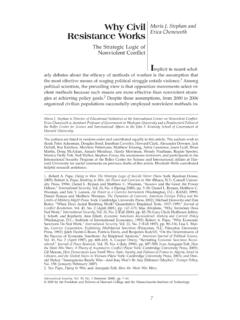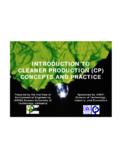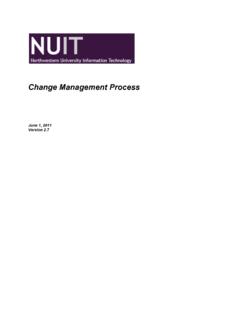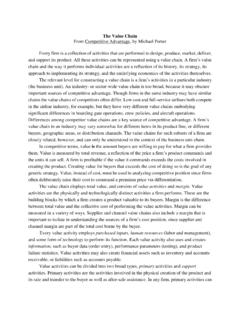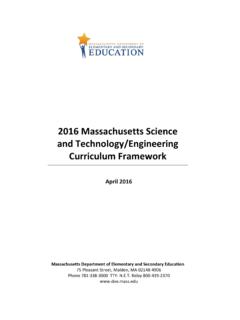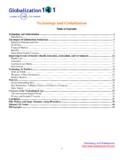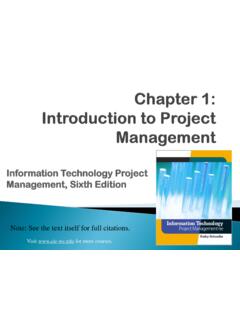Transcription of The relationship between science and technology
1 The relationship between science and technology Harvey Brooks John F. Kennedy School of Government, Harvard Universily, 79 Street, Cambridge, MA 02138, USA science , technology and innovation each represent a suc- cessively larger category of activities which are highly interde- pendent but distinct. science contributes to technology in at least six ways: (1) new knowledge which serves as a direct source of ideas for new technological possibilities; (2) source of tools and techniques for more efficient engineering design and a knowledge base for evaluation of feasibility of designs; (3) research instrumentation, laboratory techniques and ana- lytical methods used in research that eventually find their way into design or industrial practices, often through intermediate disciplines.
2 (4) practice of research as a source for develop- ment and assimilation of new human skills and capabilities eventually useful for technology ; (5) creation of a knowledge base that becomes increasingly important in the assessment of technology in terms of its wider social and environmental impacts; (6) knowledge base that enables more efficient strategies of applied research, development, and refinement of new technologies. The converse impact of technology on science is of at least equal importance: (1) through providing a fertile source of novel scientific questions and thereby also helping to justify the allocation of resources needed to address these questions in an efficient and timely manner, extending the agenda of science ; (2) as a source of otherwise unavailable instrumenta- tion and techniques needed to address novel and more diffi- cult scientific questions more efficiently.
3 Specific examples of each of these two-way interactions are discussed. Because of many indirect as well as direct connections between science and technology , the research portfolio of potential social benefit is much broader and more diverse than would be suggested by looking only at the direct connections between science and technology . Correspondence to: H. Brooks, John F. Kennedy School of Government, Harvard University, 79 Street, Cam- bridge, MA 02138, USA. Tel., (617) 495-1445; fax, (617) 495-5776. Research Policy 23 (1994) 477-486 North-Holland 1. Introduction Much public debate about science and tech- nology policy has been implicitly dominated by a pipeline model of the innovation process in which new technological ideas emerge as a result of new discoveries in science and move through a progression from applied research, design, manu- facturing and, finally, commercialization and marketing.
4 This model seemed to correspond with some of the most visible success stories of World War II, such as the atomic bomb, radar, and the proximity fuze, and appeared to be further exem- plified by developments such as the transistor, the laser, the computer, and, most recently, the nascent biotechnology industry arising out of the discovery of recombinant DNA techniques. The model was also, perhaps inadvertently, legiti- mated by the influential Bush report, science , the Endless Frontier, which over time came to be interpreted as saying that if the nation supported scientists to carry out research according to their own sense of what was important and interesting, technologies useful to health, national security, and the economy would follow almost automati- cally once the potential opportunities opened up by new scientific discoveries became widely known to the military, the health professions.
5 And the private entrepreneurs operating in the national economy. (See United States Office of Scientific Research and Development (1945) for a recent account of the political context and general intel- lectual climate in which this report originated; see also Frederickson, 1993.) The body of re- search knowledge was thought of as a kind of intellectual bank account on which society as a 0048-7333/94/$ 0 1994 - Elsevier science All rights reserved SSDI 0048-7333(94)01001-S 478 H. Brooks / The relationship between science and technoluRy whole would be abte to draw almost automati- caliy as required to fulfil its aspirations and needs.
6 Though most knowledgeable people under- stood that such a model corresponded only to the rare and exceptional cases cited above, it became embodied in political rhetoric and took consider- able hold on the public imagination and seemed to be confirmed by a sufficient number of dra- matic anecdotes so that it was regarded as typical of the entire process of technological innovation, though it was severely criticized by many scholars. (See Kline and Rosenberg (1986) for an example of criticism and an excellent discussion of a more realistic and typical model.) One consequence was considerable confusion in the public mind between science and engineering, an excessive preoccupation with technical originality and pri- ority of conception as not only necessary but sufficient conditions for successful technological innovation, and in fact an equating of organized research and development (R&D) with the inno- vation process itself.
7 The ratio of national R&D expenditures to gross domestic product (GDP) often became a surrogate measure of national technological performance and, uItimately, of long-term national economic potential. The con- tent of R&D was treated as a black box that yielded benefits almost independently of what was inside it (Brooks, 1993, pp. 30-31). The public may be forgiven its confusions, as indeed the relationships between science and technology are very complex, though interactive, and are often different in different fields and at different phases of a technological life cycle.
8 Nelson (1992) has given a definition of technology both as .. , specific designs and practices and as generic . that provides understand- ing of how [and why] things . and what are the most promising approaches to further advances, including .. the nature of currently binding constraints. It is important here to note that technoiogy is not just things, but also embod- ies a degree of generic understanding, which makes it seem more like science , and yet it is understanding that relates to a specific artifact, which distinguishes it from normal scientific un- derstanding, although there may be a close corre- spondence.
9 Similarly, Nelson (1992, p. 349) defines innova- tion as .. the processes by which firms master and get into practice product designs that are new to them, whether or not they are new to the universe, or even to the nation. The current US mental model of innovation often places excessive emphasis on originality in the sense of newness to the universe as opposed to newness in context. In general, the activities and investments associated with technoIogica1 leadership in the sense of absolute originali~ differ much less than is gen- erally assumed from those associated with simply staying near the forefront of best national or world practice.
10 Yet R&D is also necessary for learning about technology even when it is not new to the universe but only in the particular context in which it is being used for the first time (Brooks, 1991, pp. 20-25). However, innovation involves much more than R&D. Charpie (1967) has provided a representa- tive allocation of effort that goes into the intro- duction of a new product, as follows: (a) conception, primarily knowledge genera- tion (research, advanced development, basic in- vention) 5-10%; (b) product design and engineering, lo-20%; cc> getting ready for manufacturing (lay-out, tooling, process design), 40-60%; (d) manufacturing start-up, debugging produc- tion, 5-15%; (e) marketing start-up, probing the market, lo-20%.

